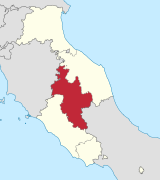
Pope Gregory X, born Teobaldo Visconti, was head of the Catholic Church and ruler of the Papal States from 1 September 1271 to his death and was a member of the Secular Franciscan Order. He was elected at the conclusion of a papal election that ran from 1268 to 1271, the longest papal election in the history of the Catholic Church.
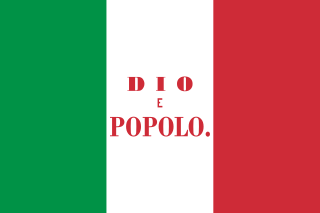
The Roman Republic was a short-lived state declared on 9 February 1849, when the government of the Papal States was temporarily replaced by a republican government due to Pope Pius IX's departure to Gaeta. The republic was led by Carlo Armellini, Giuseppe Mazzini, and Aurelio Saffi. Together they formed a triumvirate, a reflection of a form of government during the first century BC crisis of the Roman Republic.
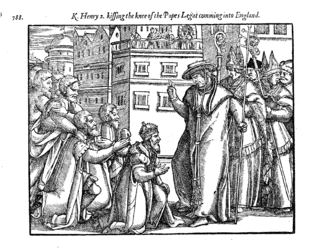
A papal legate or apostolic legate is a personal representative of the Pope to foreign nations, to some part other of the Catholic Church, or representatives of the state or monarchy. He is empowered on matters of Catholic faith and for the settlement of ecclesiastical matters.

Giacomo Antonelli was an Italian cardinal deacon. He was the Cardinal Secretary of State from 1848 until his death; he played a key role in Italian politics, resisting the unification of Italy and affecting Roman Catholic interests in European affairs. He was often called the "Italian Richelieu" and the "Red Pope."
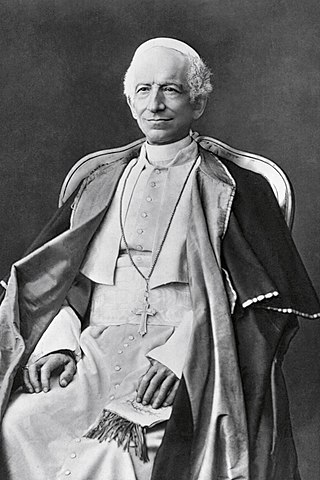
The papal conclave held from 18 to 20 February 1878 saw the election of Vincenzo Pecci, who took the name Leo XIII as pope. Held after the death of Pius IX, who had had the longest pontificate since Saint Peter, it was the first election of a pope who would not rule the Papal States. It was the first to meet in the Apostolic Palace in the Vatican because the venue used earlier in the 19th century, the Quirinal Palace, was now the palace of the king of Italy, Umberto I.
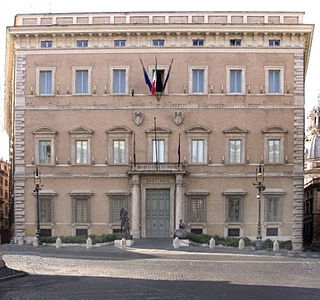
The province of Rome was one of the five provinces that formed part of the Lazio region of Italy. It was established in 1870 and disestablished in 2014. It was essentially coterminous with the Rome metropolitan area. The city of Rome was the provincial capital. During the 1920s, the boundary of the province shrank as land was ceded to establish new provinces. The province of Rome was the most populous province in Italy. On 1 January 2015, it was superseded by a new local government body—the Metropolitan City of Rome Capital.
Duke of Camerino is a title of nobility, originally in Papal peerage. It was created on 1503 by Apostolic authority of Pope Alexander VI and cardinal council over the ancient Marquissate of Camerino, which was part of the Dukedom of Spoleto.

Gaetano Bedini was an Italian ecclesiastic, cardinal, and diplomat of the Catholic Church.

Domenico Antonio Luigi Pacifico Nicola Baldassare Consolini was an Italian bishop and cardinal, who served as a diplomat of the Holy See.

The Archdiocese of Fermo is a Latin archdiocese of the Catholic Church in northern Italy, with its seat in the city of Fermo, Marche. It was established as the Diocese of Fermo in the 3rd century, and elevated to an archdiocese by Pope Sixtus V on 24 May 1589. The archiepiscopal seat is Fermo Cathedral. The current archbishop is Rocco Pennacchio.
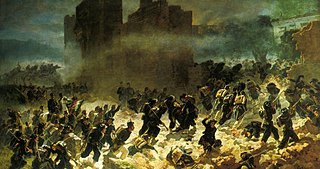
The Capture of Rome on 20 September 1870 was the final event of the unification of Italy (Risorgimento), marking both the final defeat of the Papal States under Pope Pius IX and the unification of the Italian Peninsula under the Kingdom of Italy.

Camillo di Pietro J.U.D. was an Italian Cardinal of the Roman Catholic Church and both Camerlengo of the Sacred College of Cardinals and later Camerlengo of the Holy Roman Church.
RidolfoII da Varano, signore di Camerino, was a condottiero operating in Italy from the 1360s. His forebears had long held the rocca of Varano on the borderland of the Papal States, controlling a major strategic pass between Umbria and the Marche, a link between Rome and the Adriatic coast. He inherited from Gentile di Berardo da Varano in 1355, and undertook the improvement of the fortifications that protected the commune and its rocca.
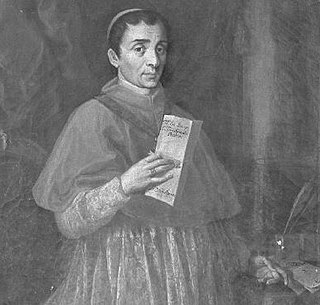
Ugo Pietro Spinola was a Catholic cardinal and was Apostolic Nuncio to Austria and camerlengo of the Sacred College of Cardinals.

Papal travel outside Rome has been historically rare, and voluntary travel of the pope was non-existent for the first 500 years. Pope John Paul II (1978–2005) undertook more pastoral trips than all his predecessors combined. Pope Francis (2013–present), Pope Paul VI (1963–1978) and Pope Benedict XVI (2005–2013) also travelled globally, the latter to a lesser extent due to his advanced age.

Gianfrancesco Gambara (1533–1587) was an Italian Roman Catholic cardinal and bishop.
Duke of Romagna is a title of nobility, originally in the Papal peerage. It was created in 1501 by the Apostolic authority of Pope Alexander VI and the cardinal council for Cesare Borgia, Duke of Valentinois, after his conquest of Romagna, Urbino, and Camerino.
Le più colte was an apostolic letter issued by Pope Pius VII in the first year of his pontificate (1801) in the form of a motu proprio, written in Italian, which set out drastic reforms in agricultural policy within the Papal States.
The Congregation for Indulgences and Sacred Relics was a body of the Roman Curia, created in 1669 and suppressed in 1904.



